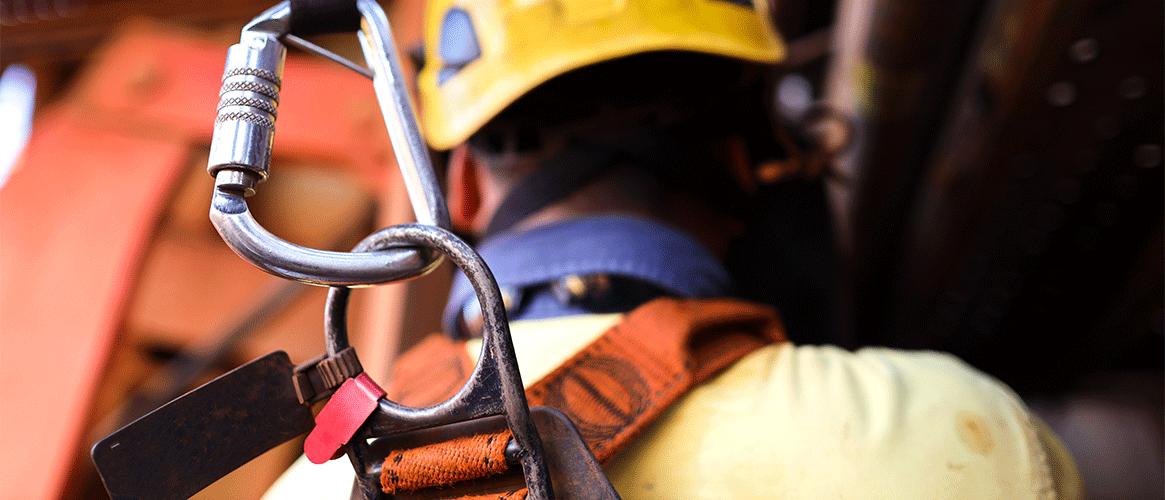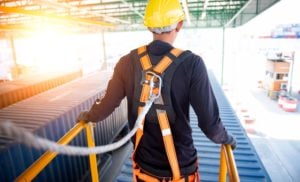You might think you can get a job done faster if you don't have to spend time putting on safety equipment. But, cutting corners can have devastating effects. Falls remain one of the top causes of death in construction. It's the law to use fall protection whenever a worker faces serious risk of injury, including:
- Working on structures where a worker could fall more than 7 feet.
- Working on thrustouts, trusses, beams, purlins, and plates at heights over 15 feet.
- Working on a sloped roof.
To prevent falls at worksites, you should use guardrails and toeboards or other strong fall barriers. Still, there will be areas where guardrails or other barriers aren't going to work. That's when workers need to use approved personal fall protection systems or positioning devices.
Personal Fall Protection
Personal fall protection systems need a tie off and what's called fall arrest and travel restraint. Fall arrest stops a fall within a few feet of the worker’s original position A full body harness is required with a fall arrest system. The system typically consists of a full body harness, a lanyard, a rope grab, a lifeline, and a lifeline anchor. Workers need to wear it when working on a rolling scaffold that is being moved. Workers also need to wear it when using or getting on and off suspended access equipment. There should be an emergency plan in place in case an employee becomes suspended in a harness.

